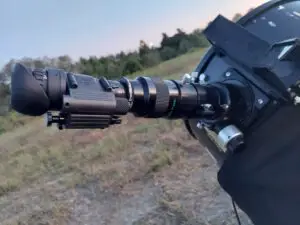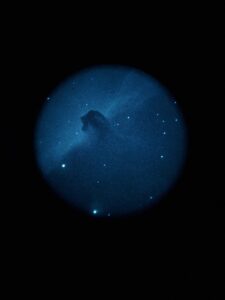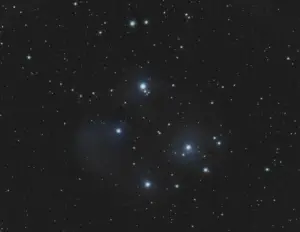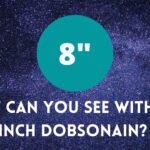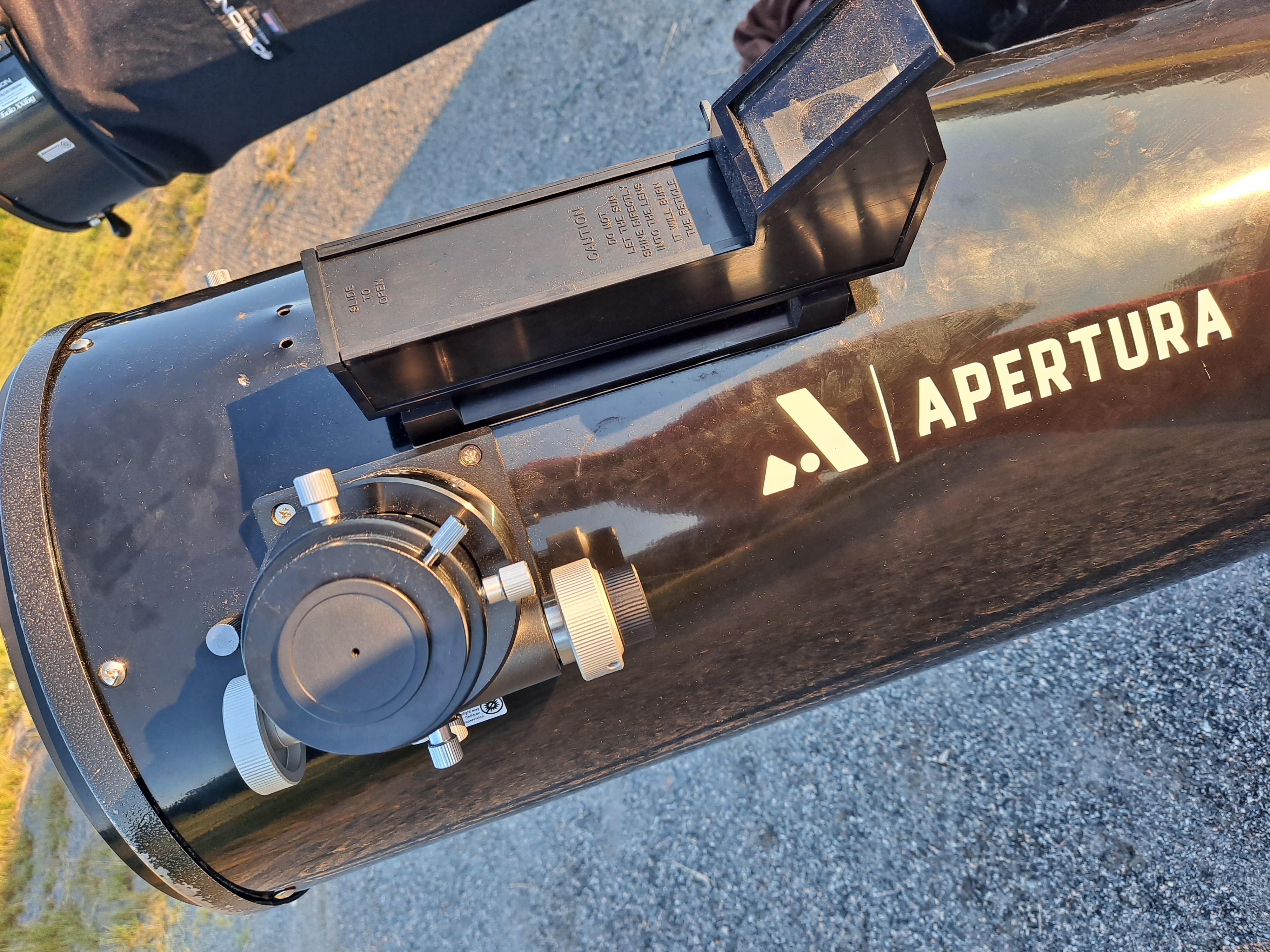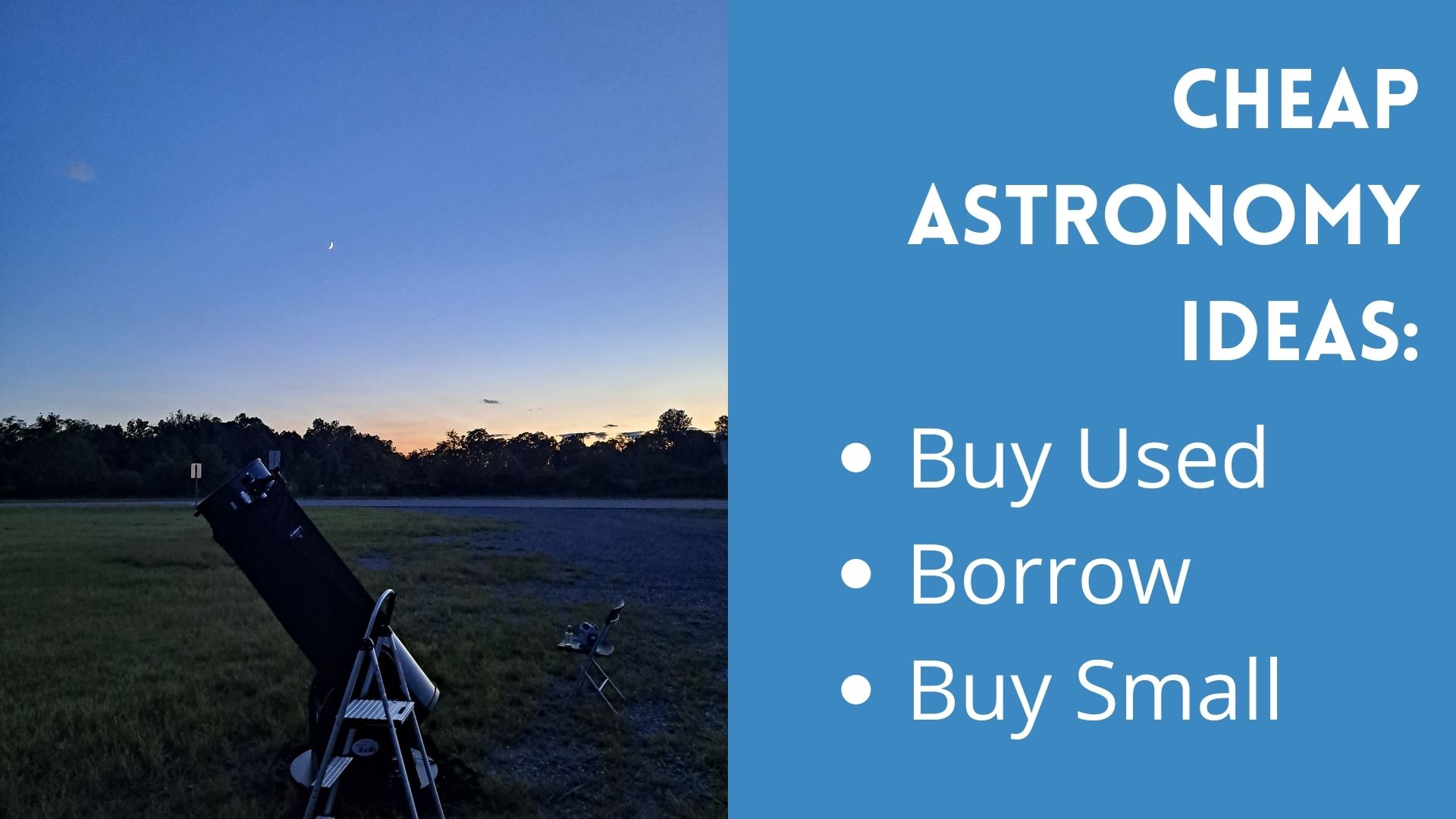A good telescope can last your child for their whole life, the telescopes we are recommending are high quality and capable of seeing some amazing sites in the sky.
Buying a telescope can be intimidating for parents who are not into astronomy, so I made this list free from confusing descriptions and astronomy jargon.
When you are choosing a scope for your young child, choose one that will give them the best views possible and that they can grow into.
We are big fans of Dobsonian telescopes because they are designed for anyone to be able to use. Dobsonian refers to the type of base that holds the telescope up. The Dobsonian design is very intuitive and inexpensive.
Dobsonian Telescopes are larger and heavier than some telescopes, but you will get the most bang for your buck with these scopes.
We have included one tripod mounted telescope on the list if you are looking for something more traditional looking.
Here are the three telescopes we think are good choices for your 9-10 year old.
All links are affiliate links, meaning that we will make a small commission if you choose to purchase through our link, except that last one, buy that one from High Point.
1. Orion XT6
The Orion XT6 is a Dobsonian Telescope that is a great choice for a 9-10 year old.
A Dobsonian telescope is a big long telescope that sits on a base on the ground. It is a pretty large telescope.
This telescope has 6 inches of aperture, so you will be able to see dim objects more easily than with a smaller telescope.
It will come in two pieces, the base and the optical tube, and they are both light enough to be handled by a 9-10 year old.
The base weighs 20.9 lbs and the optical tube weighs 13.5 lbs and is 45.5 inches long.
The optical tube is completely assembled, but the base will need to be put together with the included tools.
The Orion XT 6 comes with an eyepiece and a finderscope in the box, so you will be able to use it as soon as the base is assembled.
You do not need much more to enjoy a night of observing, but you will want to get an observing chair to make it comfortable to sit and look through the eyepiece.
What Can You See?
So, what will you be able to see with this telescope? Well, if your conditions are good you will be able to clearly see the rings of Saturn, the cloud bands of Jupiter and the Orion Nebula.
If you live in a very bright area you may need to travel to a darker site to see more detail and more stars.
Even in a bright sky you will be able to see details on the surface of the moon. There is a lot to see on the moon, if you study lunar geography it is a very interesting thing to study.
You can also see the phases of Venus! Venus goes through phases just like the moon.
Galaxies are also great targets with the Orion XT6 if you have a dark sky. The Andromeda Galaxy is a great first galaxy to find with your telescope.
2. Zhumell Z130
This 5 inch tabletop Dobsonian telescope is a great introductory telescope. It is a very low cost way to start the hobby.
This telescope comes with 2 eyepieces, a red dot finder and a parabolic mirror.
It is very lightweight at 18.6 pounds when completely assembled.
The 25mm eyepiece is a good eyepiece to get started with and you may choose to upgrade as you progress in the hobby. I recommend a zoom eyepiece like the one here (affiliate link) which will give you a wide range of magnification options in one eyepiece.
This telescope is very portable and easy to set up. It is lightweight and easy to bring along on a camping trip or family vacation.
This telescope is a tabletop Dobsonina so the base will need to sit on something while observing. This can be difficult if you travel with your telescope. A bar stool can work well for this, but the hood of the car is an awkward platform.
You may also consider adding a phone mount to the eyepiece to take pictures with your phone camera. You can also hold your phone over the eyepiece and get pictures of planets and bright stars.
There are some limitations of this telescope, and as you progress in this hobby you may choose to add an observing chair, telrad or other accessories.
You will need a way to collimate the scope so consider adding a laser collimator.
What can you see?
You can see the geography of the moon clearly with this telescope, craters and mountain ranges will stand out on a clear night.
On a good clear night you can expect to see the rings of Saturn with this scope as well. This is always a memorable sight for a new astronomer and it is a great thing to show your friends with your new scope.
Another exciting target with this scope is the moons of Jupeter. You can see several of the larger moons of Jupeter with a Zhumell Z130. The large aperture (5 inches) makes it easier to see dimmer objects that are further away.
The Orion Nebula is stunning. It is one of the easier targets for a young astronomer to find as it is located in Orion. This nebula is a star and planet forming region that is heavily studied and photographed.
3. Celestron Nexstar 4SE or 6SE
This telescope is a bit more expensive, but it comes with a computerized base that helps you find objects in the night sky.
They are “Go To” scopes. They have a large catalog of objects that can be located by the computer.
Many new astronomers have difficulty setting up the GoTo when they first start using the scope.
This video is helpful, and if you are still having trouble, reach out to the local astronomy club. If you are having trouble finding an astronomy club, start by calling your local library and National Park. They usually have an astronomy contact.
The amature astronomy community is very helpful and I have had to call for help many many times.
After setting up your hand controller you can choose to take a tour of the night sky and the scope will point to the most interesting things in the night sky on any given night.
These are very popular telescopes for beginners and experienced astronomers, so be sure to order early as they are often on back order.
Although I am not an affiliate, I recommend that you buy the scope directly from High Point Scientific as the customer service support is more robust than Amazon.
What Can You See?
This telescope has a longer focal ratio than the other scopes recommended here, so it is easier to see planets and other bright objects.
With this telescope you can enjoy observing the moon, Saturn, Jupiter and Venus.
Venus goes through phases like the moon, and you can see those changes with this telescope.
Saturn’s rings are an exciting site for all new astronomers and you will be able to see them and possibly even make out the Cassini Divide, which is the division in the rings.
You will also be able to see various nebulae, the birthplaces of stars and planets. The Orion Nebula is a great place to start as it is easy to locate in Orion.
How to Start Using a Telescope with an 9-10 Year Old
When you are just getting into astronomy as a hobby it can be a bit intimidating. Here are the steps to get you using a telescope and enjoying the night sky.
Attend a Star Party
Star Parties are what astronomers call meetups. Often museums and National Parks will host Star Parties where many astronomers will bring their telescopes and observe together for a few hours or a few days.
If you are interested in astronomy, attending a Star Party is a great way to see a whole bunch of telescopes and get an idea about what you want to get for your family.
It is common for astronomers to set up their scopes for people to look through at these parties. They may invite you to look or you may get in line behind one scope.
Take your time and look through as many telescopes as possible.
Learn the Constellations
When you start using a telescope you will spend a lot of time learning the sky.
Start learning the sky together by identifying constellations.
There are only 88 recognized constellations that make up the whole sky, they have been officially determined by the International Astronomical Union. Learning a few of these constellations is a great way to become familiar with the night sky.
Spend Time Looking Up
Spend time outside stargazing. Learn more about the sky above your home and discover some targets that you hope to explore with your telescope.
Find places that you like to stargaze, become familiar with the places that allow you to be there overnight.
Get bug spray that you like, socks that keep you warm and a good red light so you can see where you are going.
Choose Some Targets
Astronomy is like a treasure hunt in the sky.
When you look through a telescope you will not see images like NASA produces with their telescopes, you will see mostly black and white shapes.
The excitement often comes from finding something you are looking for.
I like to use an app like SkyMap to write down a few things that I hope to find and then when I go out I will look for them.
The more I know about your target the more exciting it is to find them.
Get a Good Scope and Know What To Expect
When you are selecting a telescope, choose the best one you can afford, it can last you a lifetime.
Many children are discouraged from a hobby of astronomy because they have a low quality or difficult to use telescope.
Have an open mind and be willing to reach out for help until you are comfortable using your telescope.
Using a telescope is simple, but it takes practice and patience. Do not be discouraged if you encounter difficulties. Ask your question on Facebook, in Reddit or on your favorite astronomy forum.
Host a Star Party
Once you are comfortable using your telescope, share the hobby with others!
If an eclipse, conjunction or other event is happening you can invite friends and family out to see the event.
We have had great success inviting people in our neighborhood social media group out to star parties.
Astronomy can be a lonely hobby, so be intentional about sharing it.

